Abstract
Workers in a modern electronics factory were surveyed by questionnaire and lung function testing to see if there was evidence of widespread work-related respiratory symptoms. Of the responding workers exposed to solder flux fumes on the shop floor, 22% had work-related breathlessness or wheeze or both. Exposed workers had a lower FEV1 and FVC than unexposed workers. Work-related rhinitis was also present in 22% of exposed workers. The most likely cause for these results is sensitivity to colophony fumes, released from solder flux during soldering. Levels of solder flux fume were below the threshold limit value in this factory during the survey.
Full text
PDF
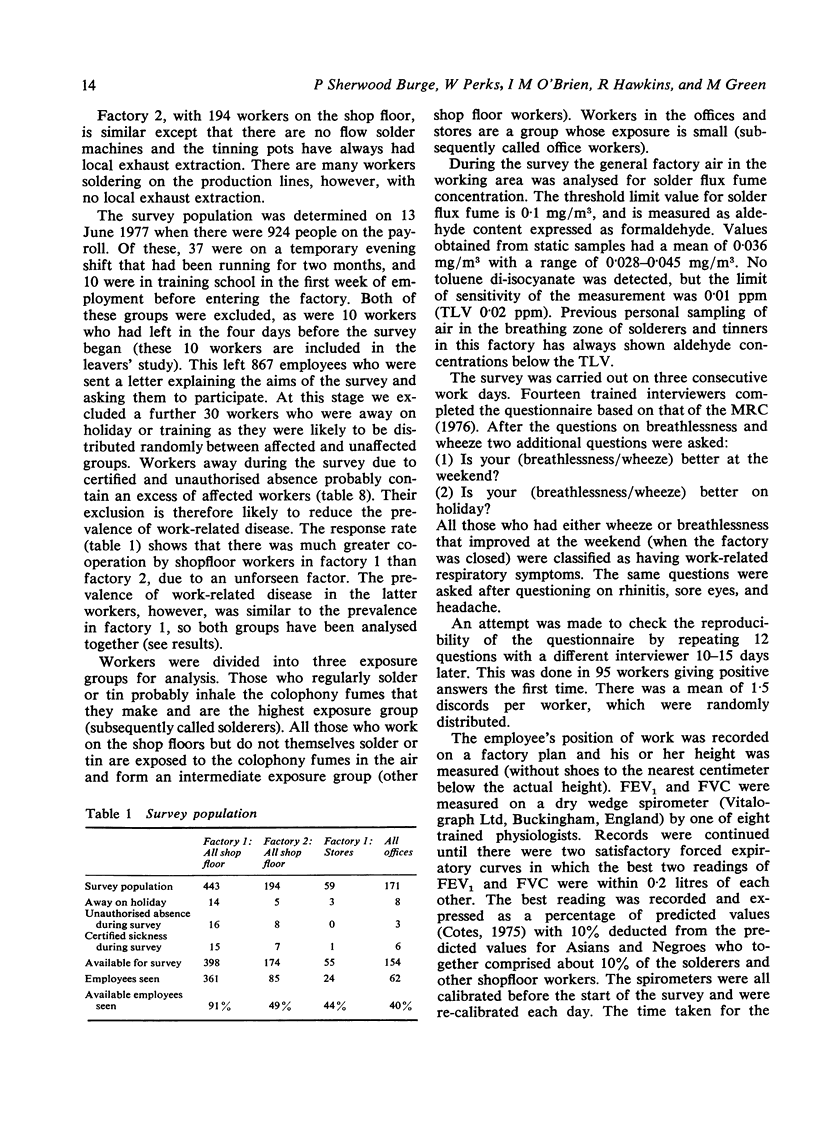
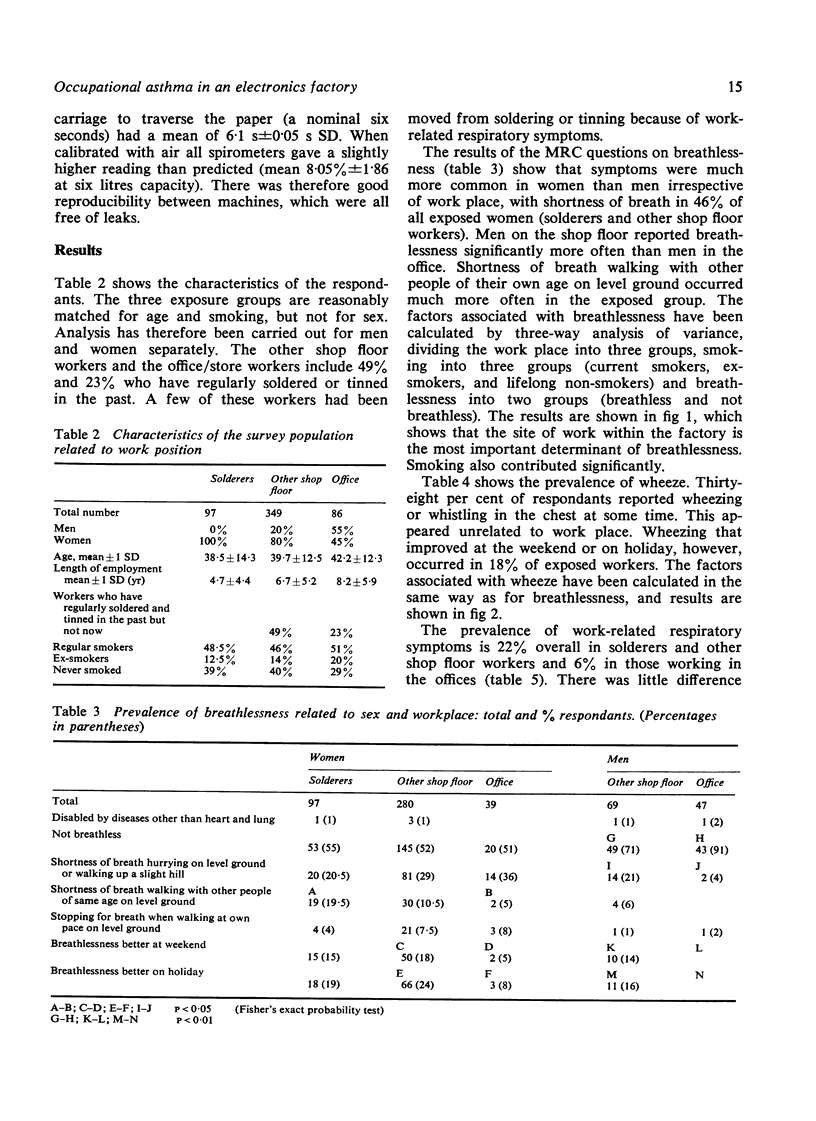
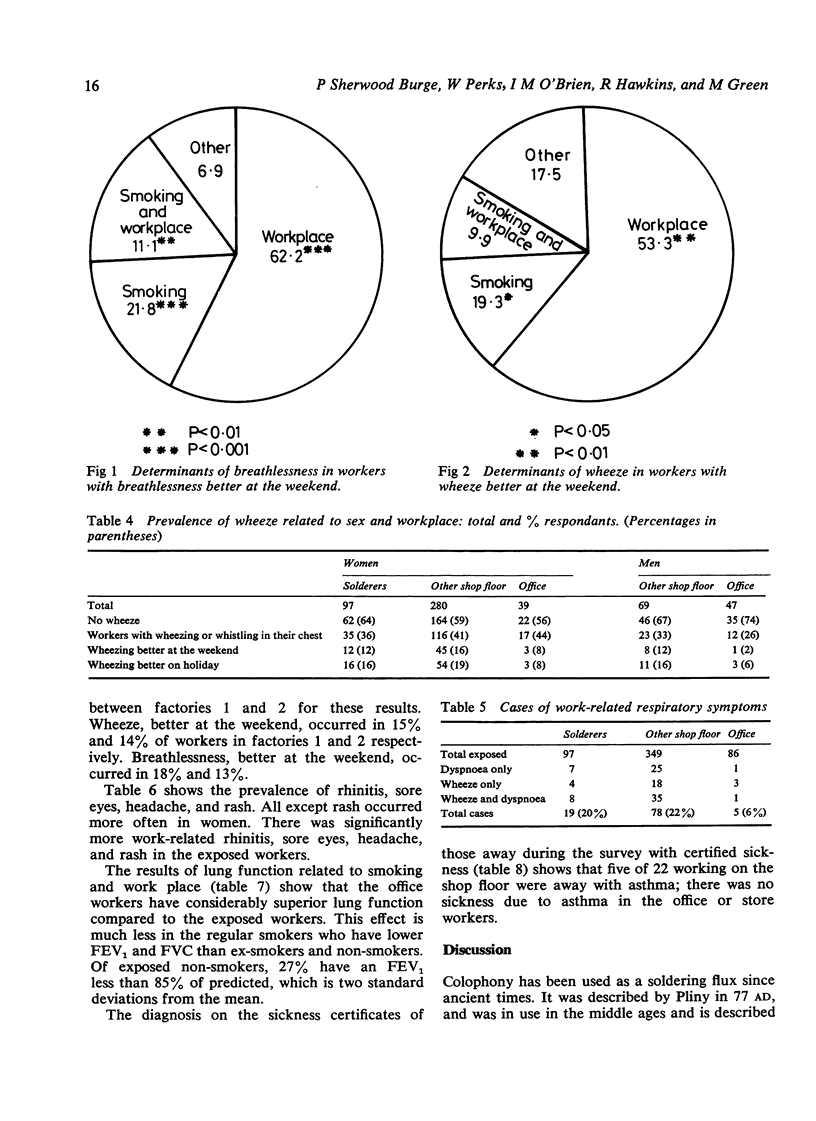
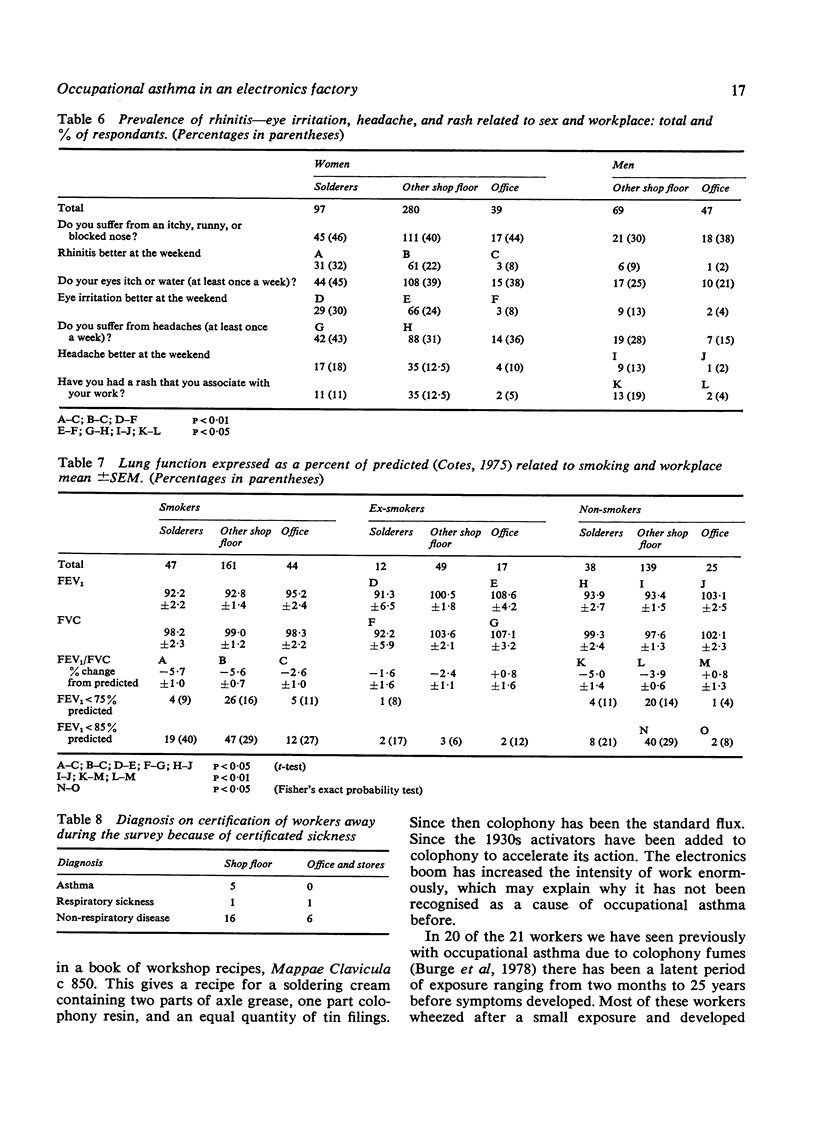
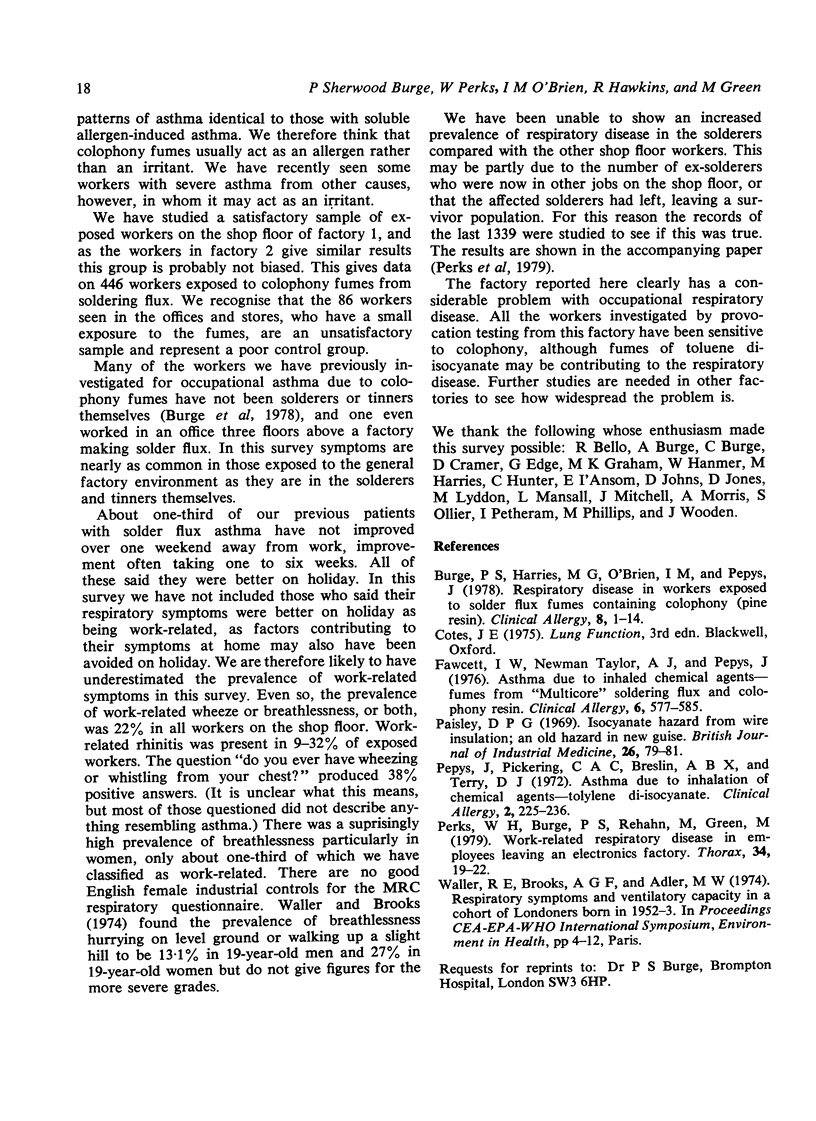
Selected References
These references are in PubMed. This may not be the complete list of references from this article.
- Burge P. S., Harries M. G., O'Brien I. M., Pepys J. Respiratory disease in workers exposed to solder flux fumes containing colophony (pine resin). Clin Allergy. 1978 Jan;8(1):1–14. doi: 10.1111/j.1365-2222.1978.tb00441.x. [DOI] [PubMed] [Google Scholar]
- Fawcett I. W., Taylor A. J., Pepys J. Asthma due to inhaled chemical agents--fumes from 'Multicore' soldering flux and colophony resin. Clin Allergy. 1976 Nov;6(6):577–585. doi: 10.1111/j.1365-2222.1976.tb01944.x. [DOI] [PubMed] [Google Scholar]
- Paisley D. P. Isocyanate hazard from wire insulation: an old hazard in a new guise. Br J Ind Med. 1969 Jan;26(1):79–81. doi: 10.1136/oem.26.1.79. [DOI] [PMC free article] [PubMed] [Google Scholar]
- Pepys J., Pickering C. A., Breslin A. B., Terry D. J. Asthma due to inhaled chemical agents, tolylene di-isocyanate. Clin Allergy. 1972 Sep;2(3):225–236. doi: 10.1111/j.1365-2222.1972.tb01287.x. [DOI] [PubMed] [Google Scholar]
- Perks W. H., Burge P. S., Rehahn M., Green M. Work-related respiratory disease in employees leaving an electronics factory. Thorax. 1979 Feb;34(1):19–22. doi: 10.1136/thx.34.1.19. [DOI] [PMC free article] [PubMed] [Google Scholar]


